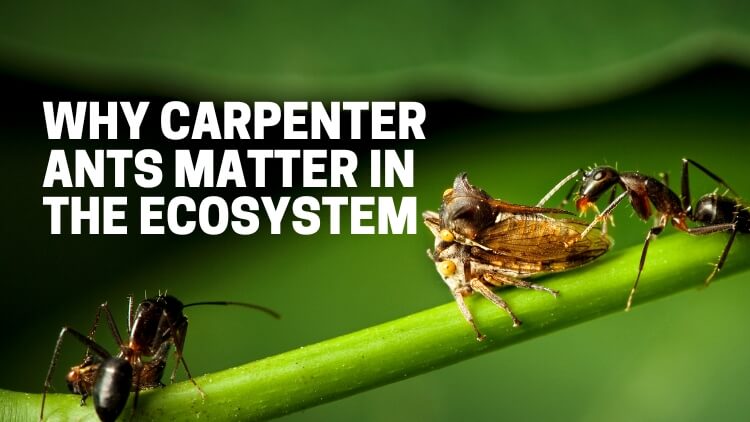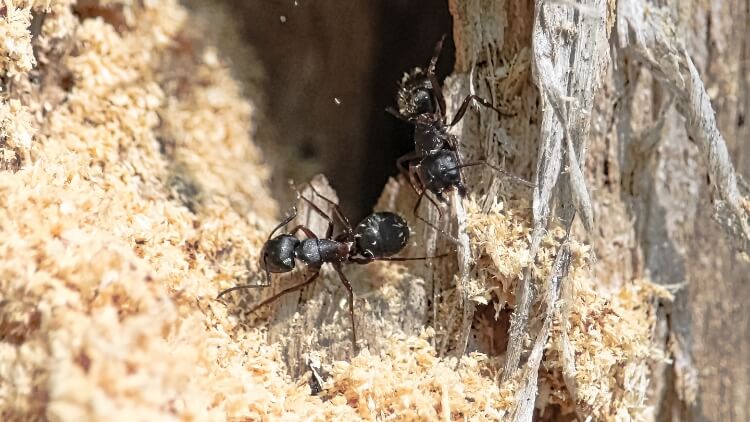Niagara Pest Control: Why Carpenter Ants Matter in the Ecosystem

Have you ever wondered about the secret life of the tiny warriors we often refer to as pests? Surprisingly, they play essential roles in our ecosystem. This is certainly true in the case of carpenter ants. These industrious insects have more to offer than just being a nuisance to homeowners. This enlightening journey will take you through the importance of carpenter ants, disclose how to identify their presence, and, lastly, guide you on how to master the art of carpenter ant removal in Niagara with the help of a professional.
While maintaining any ecosystem’s delicate balance, it is crucial to understand each organism’s role. Indeed, even those we might consider ‘pests.’
We’ll dive deep into the world of carpenter ants, explore the types populating our homes, and discuss how to spot the signs of an infestation.
Most importantly, we’ll reveal the top 10 ways to address this issue with a pest control expert. Of course, prevention is always better than cure, so we’ll highlight the benefits of utilizing professionals for control and prevention measures. As you journey with us, be ready to unveil the finest pest control solutions we provide to ensure your home remains a safe haven.
What is the Ecological Role of Carpenter Ants?
Understanding the ecological role of these pests can enlighten you on their importance to the ecosystem. While these insects can spell trouble for your home, they play significant roles in our environment. Let’s delve deeper into their ecological contribution:
- Cycle Nutrients: They contribute to the nutrient cycle in the ecosystem. They break down wood into sawdust, which then decomposes and becomes a rich source of nutrients for the soil.
- Aid in Seed Dispersal: Like our fellow insects, they participate actively in seed dispersal by carrying them from different plants, contributing to plant diversity and survival.
- Prey and Predator: They are not only workers but also predators and prey in the food chain. Their diet comprises other insects, hence, helping to control pest populations. However, they are also food for other larger predators.
- Improve Soil Conditions: They excavate galleries in wood- both living and dead. This action allows water and air to penetrate deeper, enhancing soil conditions for other organisms.
- Part of Queen Carpenter Ant’s Colony: These pests are crucial in the creation and maintenance of the queen colony. The worker ants protect the queen, gather food, and care for the young, ensuring the survival of their species.
While these pests are key participants in maintaining the balance of our ecosystem, their presence can also signify the need for removal in more urban or home settings. Stay tuned as we delve further into how to identify and address an infestation in your home.
What are the Different Types of Carpenter Ants?
As an integral part of the ecosystem, carpenter ants come in different shapes and sizes, each uniquely interesting. Mastering the ability to identify them by type brings us a step closer to effective removal. Here’s a brief overview of the types you may encounter:

- Black: Known in scientific circles as Camponotus pennsylvanicus, these are the most recognized amongst their kin. As the name suggests, they are mostly black, although some variations can exhibit reddish or dark brown colour.
- Red: Camponotus ferrugineus, commonly known as the red carpenter ant, displays a mixture of red and black. Slightly larger than the black carpenter ant, this species is known to be highly adaptable.
- Florida: Distinct due to its vibrant red and black colour combination, the Florida Carpenter Ant, or Camponotus floridanus, is a unique inhabitant of our ecosystem.
- Queen: You’ll find these as the largest ants within a colony, laying all the eggs for fellow carpenter ants. Their primary role involves reproduction and expansion of the colony.
Understanding the unique characteristics of these types will help home and business owners to better identify potential infestation issues. It’s also crucial in developing effective methods to get rid of ants. Remember, every one plays a crucial role in the ecosystem, and treating these ants should coincide with nature’s balance.
What are the Common Signs of a Carpenter Ant Infestation?
Identifying an infestation promptly is crucial to protecting your property. Recognizing the common signs can make the difference between timely intervention and extensive damage.
Here are some indicators you should keep your eyes peeled for:
- Small Piles of Sawdust: They burrow into wood structures, often leaving behind piles of sawdust-like material known as ‘frass.’ This is a clear indication of their presence.
- Strange Sounds: If you listen closely, you might hear faint rustling noises inside your walls or furniture. This might be the pests moving around inside.
- Damage to Wood: Damaged wood on your property could point towards an infestation. Carved galleries or holes in the wood are common signs.
- Live Ants: Seeing large, black ants inside your home, particularly in the kitchen or bathroom, or around the property, is a strong sign of a nearby colony.
- Ant Trails: They tend to move in trails, especially around a food source. Observing this behaviour can lead you right back to the nest.
- Winged Ants: The presence of winged ants inside your home, especially in spring, could mean an infestation. These are often mistaken for termites.
Remember, having insight into the telltale signs of a carpenter ant infestation can aid in swift carpenter ant removal in Niagara. If you notice any of these signs, seeking immediate professional help is recommended to prevent further damage. After all, every home deserves to be a safe and pest-free haven.
What Potential Harm Can Carpenter Ants Cause to Homeowners?
Many might wonder why carpenter ants are more than a simple nuisance. These infestations can lead to serious implications for homeowners. Understanding these dangers is crucial in deciding when it’s time to bring in the experts for removal. Let’s delve into the particulars:
- Structural Damage: They generate extensive colonies within wooden structures. Though they do not consume wood like termites, they hollow it out to construct their intricate nests, which can compromise the integrity of wooden structures in your home.
- Financial Impact: Due to the structural damage that they can cause, homeowners are often faced with costly repairs. The inherent expense of rectifying the damages can outweigh the costs of professional pest control services.
- Compromised Home Value: If not dealt with professionally and promptly, an infestation can lower the market value of your property. Potential buyers might hesitate upon discovering a historical or current infestation.
- Health Hazards: These pests shouldn’t be considered harmless. While they don’t carry diseases themselves, they can contaminate your food and water through their foraging activities, hence leading to potential health issues.
With potentially disastrous consequences on your hands, homeowners must consider professional service providers such as us for effective removal. Our experienced team can ensure the infestation is completely eradicated, giving you peace of mind and preserving the integrity of your home.
What are the Top 10 Methods Pest Control Experts Recommend for Controlling Carpenter Ant Infestations?
Knowing how to manage an infestation effectively is essential. Here, we divulge the top 10 tried-and-true methods from pest control experts who excel in removal:
- Regular Inspection: Vigilance is the key. Regularly inspect your property for signs of activity.
- Seal Entry Points: Caulking around windows and doors can help you eliminate the entry points into your home.
- Keep the Premises Clean: Cleanliness decreases the chance for them to find food, making your home less attractive to them.
- Eliminate Water Sources: They are attracted to moist environments. Fix leaky pipes and ensure rain gutters are functioning properly.
- Trim Tree Branches: Tree branches touching the house render easy access.
- Use Baits: Baits can be an effective way to distribute insecticide throughout the colony, targeting the queen carpenter ant.
- Treat Wood with Borate: Wood treated with borate can resist an infestation.
- Say No to Mulch: Mulch close to the house creates an ideal habitat for carpenter ants; consider using stone instead.
- Professional Pest Control Service: A professional control service can identify infestations accurately and provide targeted treatment.
- Regular House Maintenance: Regular maintenance of your home’s structural integrity is vital to avoiding potential infestation.
Though carpenter ant control can be a complex and daunting task, knowing the above strategies can help you prevent their infestation, ensuring your home remains safe from these wood-destroying insects.
Unleash the Power of Professional Carpenter Ant Control
When it comes to carpenter ant removal in Niagara, there’s no substitute for professional expertise. As part of our service at Truly Nolen Canada, we aim to bring you the most effective solutions for dealing with these home-invading insects. These include both reactive measures as well as proactive steps to ensure your home stays free of these persistent pests.
We understand that each home has unique needs, and we customize our services to meet those needs effectively. In this context, choosing our services means embracing a comprehensive approach to pest control that factors in the critical eco-balance of the carpenter ants in the ecosystem.
So if you’re seeking to get rid of ants, remember, relevance and comprehensive planning can make all the difference in effective carpenter ant management. To learn more about how our team can assist, we welcome you to contact us to schedule an inspection today. We are excited to help you maintain a healthy, carpenter-ant-free home.